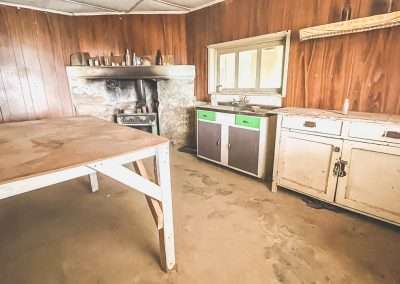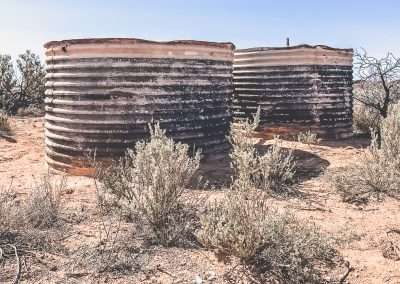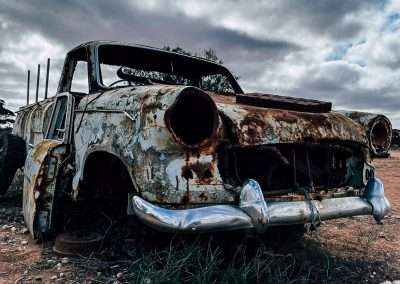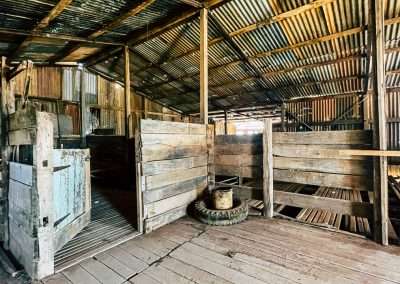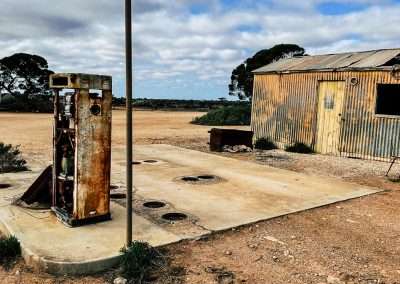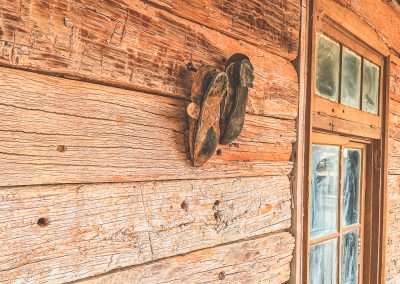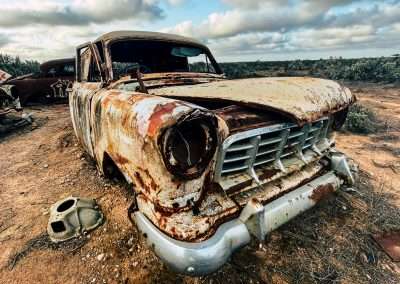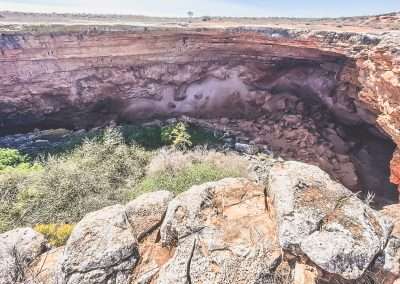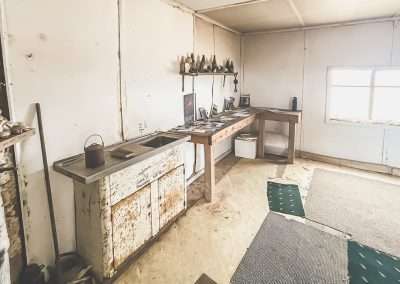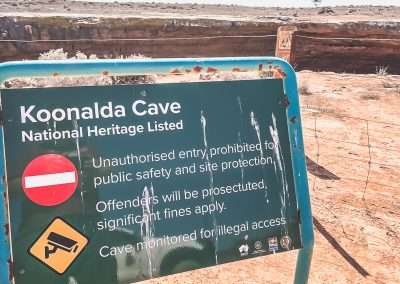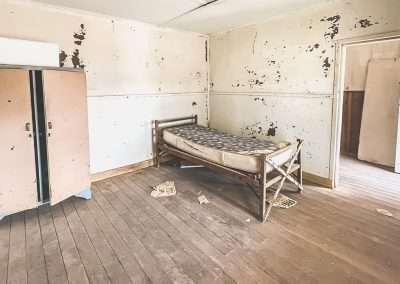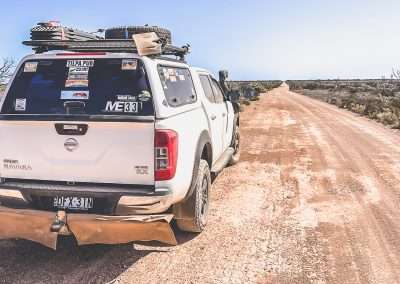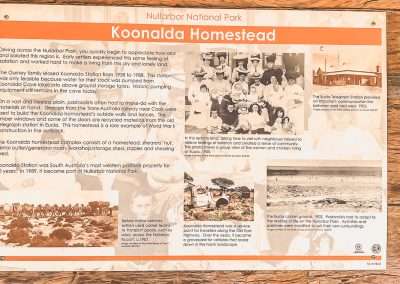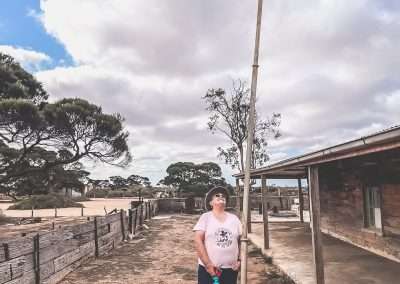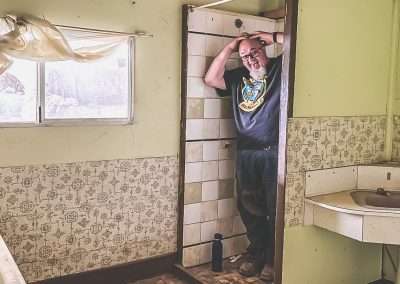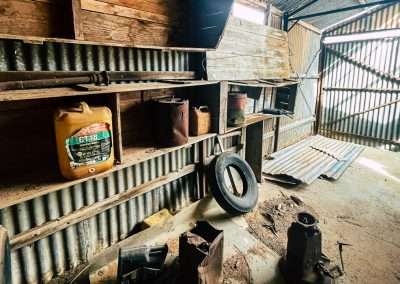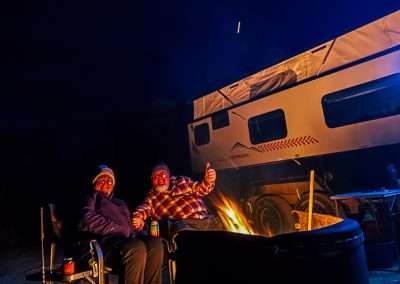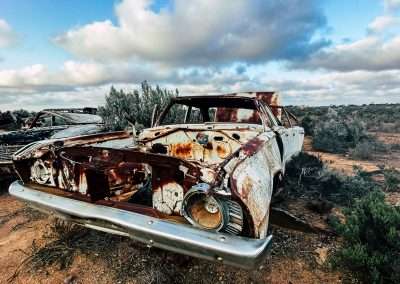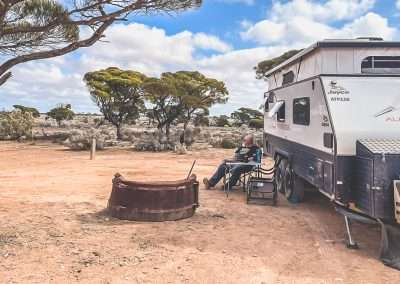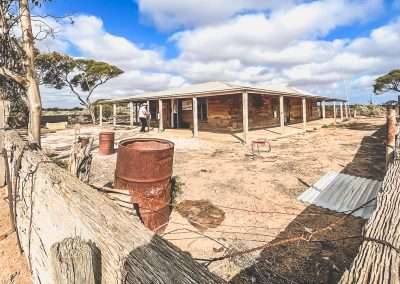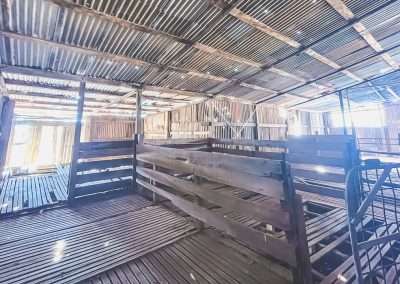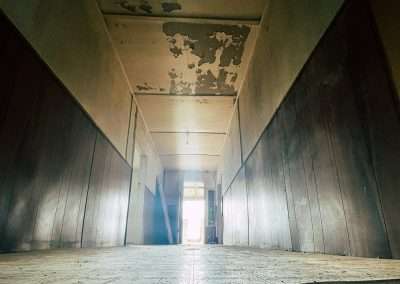Koonalda Homestead – Camping And Exploring History
We visited Koonalda Homestead and experienced the remains of an abandoned Nullarbor icon. We camped and explored including nearby Koonalda Cave. Amanda and I recently camped for two nights at Koonalda Homestead just off the Eyre Highway on the Nullarbor. Koonalda Homestead is an iconic slice of history tucked away in South Australia’s Nullarbor Plain.
This leg of our roadtrip journey started after we’d camped near Eucla at the Old Telegraph Station Campground. The drive to Koonalda Homestead after leaving the Eyre Highway was a bit more exciting than usual with rough roads and whackjob overtakers along the way. Let me tell you about it.
Table Of Contents
- The Drive to Koonalda Homestead
- Koonalda Homestead: A Step Back in Time
- Koonalda Cave: A Cultural and Geological Marvel
- The Hunt for the Koonalda Homestead Blowhole
- Driving the Old Eyre Highway
- The Koonalda Homestead Shearing Shed
- The Koonalda Homestead Sleeper Hut
- Weather and Camping Tips
- Final Thoughts
- Koonalda Homestead Photos
- FAQs About Koonalda Homestead Camping And Exploring
- What is Koonalda Homestead and why is it significant?
- How can I get to Koonalda Homestead?
- Can visitors camp at Koonalda Homestead?
- What can I see and do at Koonalda Homestead?
- What is the history behind the car graveyard near Koonalda Homestead?
- Is Koonalda Homestead part of a national park?
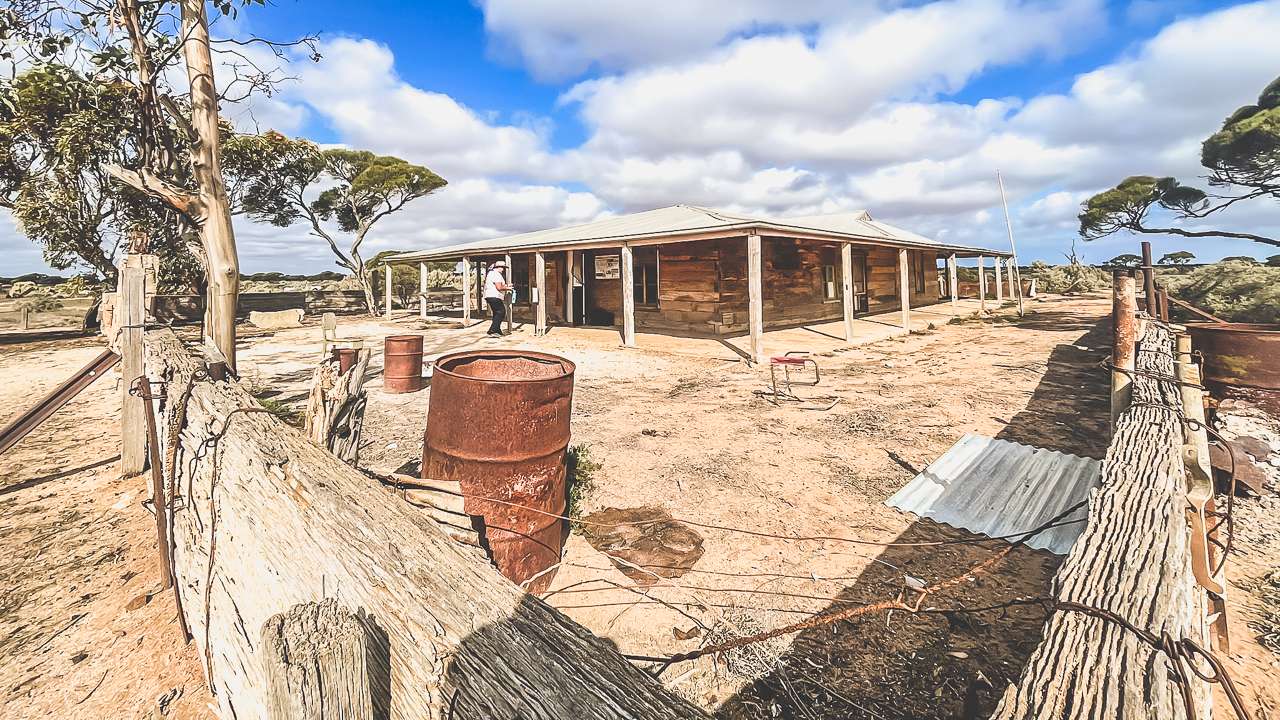
Koonalda Homestead
The Drive to Koonalda Homestead
Leaving our campsite near Eucla we hit the Eyre Highway after breakfast at the Border Village Roadhouse. The road was long and straight as the Nullarbor tends to be with the occasional bit of roadkill to break the monotony. About 40km past Border Village, we reached the turnoff to Koonalda Homestead – marked by a small, easy to miss sign. From there it’s a 14km dirt road to the homestead itself.
The gravel road in is typical National Parks style that hasn’t seen any maintenance for a long time. It was as rough as guts, with corrugated sections that shook the bejeesus out of everything. We took it slow and steady, sticking to about 40-50 km/h to avoid shaking the car and caravan to bits. We’ve done thousands and thousands of kilometres on this kind of road over the years and have learned that a cautious approach saves you a world of trouble in the outback.
Unfortunately not everyone shares our patience. About halfway along the track an idiot in a big rig overtook us without so much as a call on the UHF. I continually check our mirrors but with the dust we were chucking up I didn’t see him coming. The dust cloud he kicked up was impressive and Amanda muttered a few colourful words as we waited for it to clear.
Three minutes later we found him pulled over on the side of the track. Turns out karma worked fast with this clown. Old mates’ caravan had lost a wheel. We slowed down and offered him a hand but he wasn’t in the mood for a chat. He just waved us on. He must have sorted it in some way shape or form as he wasn’t there the following day and we didn’t see his caravan or car in the Koonalda Homestead camping area.
Lesson of the day? Take it easy on these roads. They’ll catch you out if you’re not careful.
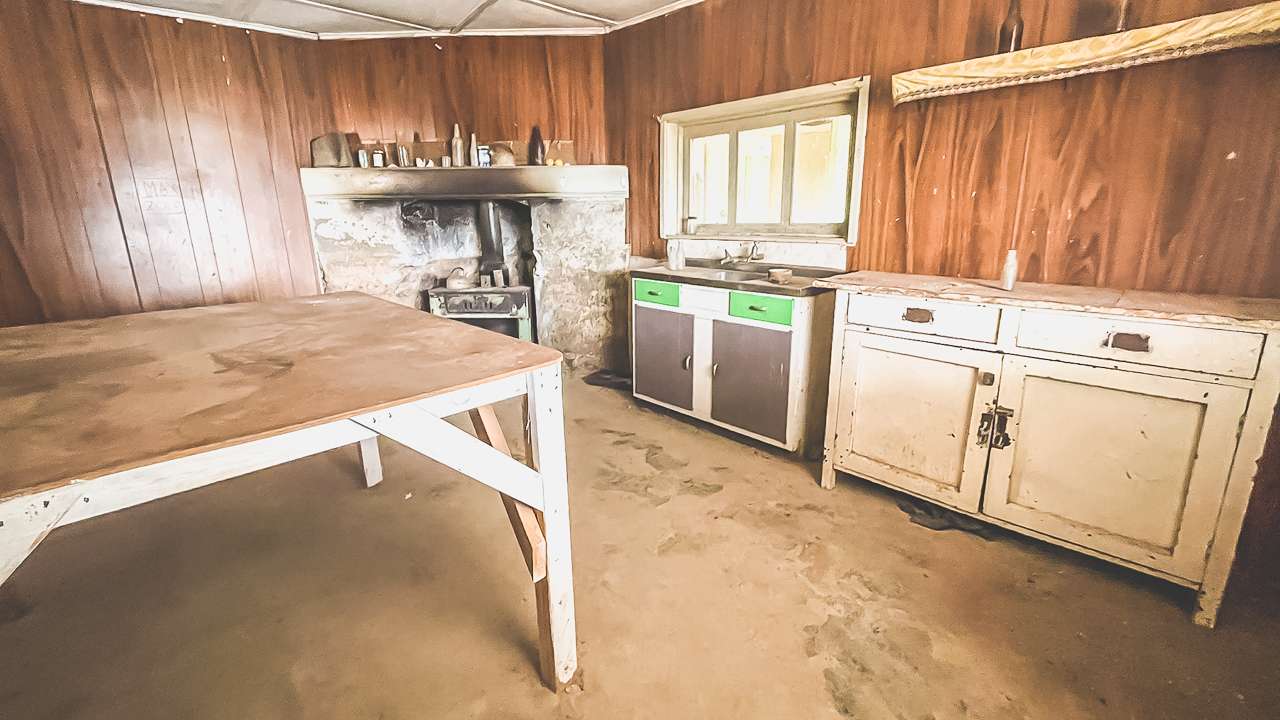
Kitchen At Koonalda Station
Koonalda Homestead: A Step Back in Time
When we finally rolled into Koonalda Homestead the landscape opened up to reveal the remains of this Koonalda Homestead and the wrecked car graveyard at this historic site. Built in the 1930s Koonalda was originally a sheep station before becoming a roadhouse on the old Eyre Highway. From the 1950s to the 1970s it was a lifeline for travellers crossing the Nullarbor, offering fuel, food and a bit of human connection in the middle of nowhere.
But when the new Eyre Highway was built further south in the late 1970s Koonalda’s days as a roadhouse came to an end. What’s left today is an almost fully intact homestead surrounded by endless plains and steeped in stories of resilience and isolation.
The first thing Amanda and I did was set up camp at the national park campground just a short walk from the homestead ruins. At $13 per night it’s a bargain and booking online was straightforward – although we suspect not everyone bothers. Make sure to book before you get to the Koonalda Homestead camping area as unless you have Starlink you won’t have an internet connection. The campsite is basic but well maintained with flat areas for tents and caravans and a few fire pits.
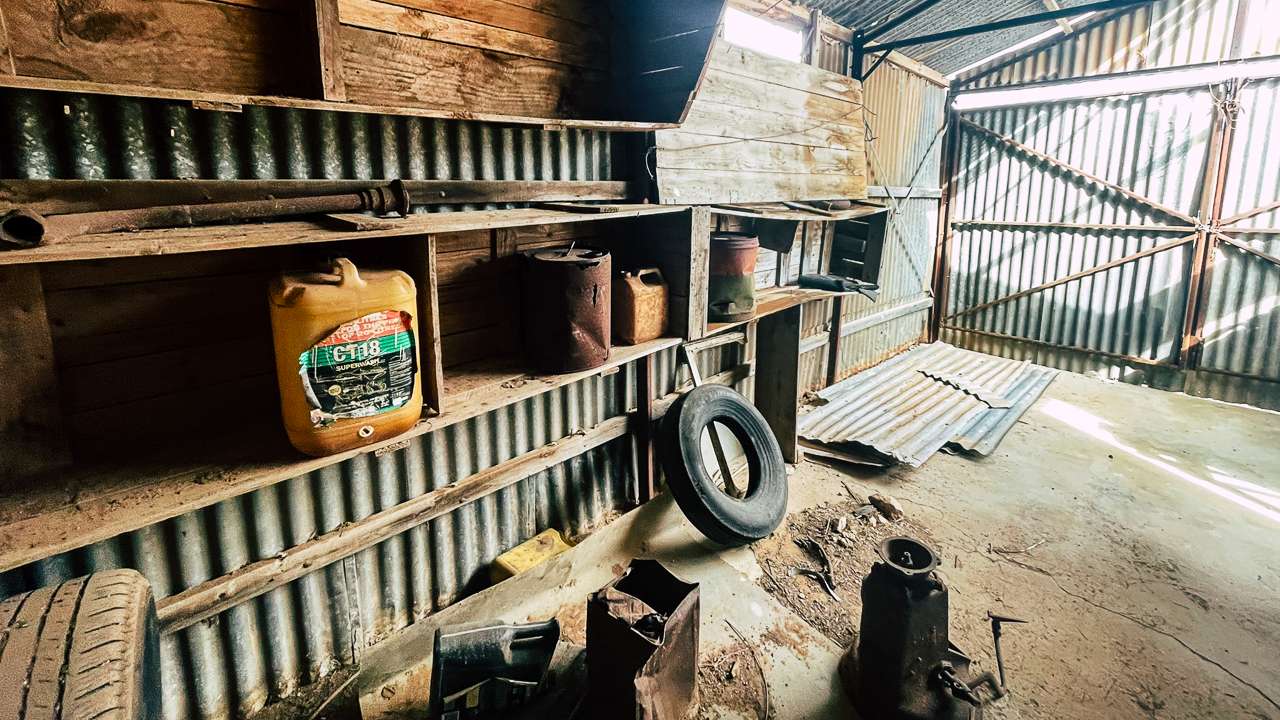
Inside The Abandoned Station Servo At Koonalda Homestead
Exploring the Old Homestead
After setting up we spent hours exploring the old Koonalda Station buildings. The main roadhouse structure is still standing. The servo with its old abandoned pumps makes for some awesome photos. Its weathered timbers, rusting tin roofs and old walls tell a story of survival in one of Australia’s harshest environments.
I found myself imagining the bustling days of the 1960s when travellers and truckies would have gathered here swapping stories over cups of billy tea. Amanda on the other hand was fascinated by the little details – old bottles, rusting machinery and remnants of old gardens scattered around.
The Car Graveyard And A Geocache
Not far from the homestead lies one of Koonalda’s best and most interesting attractions – the car graveyard. This sprawling collection of abandoned vehicles is a testament to the challenges of crossing the Nullarbor back in the day. Rusting sedans, utes and even quite a few trucks sit scattered like forgotten relics of the past.
While Amanda snapped photos of nature reclaiming these wrecks I set off on a geocaching mission. Somewhere in this mechanical graveyard, I knew there was a hidden cache. It took a bit of searching – and a lot of muttering when I walked through the car graveyard – but I finally found it tucked away under one of hundreds of sheets of corrugated iron. There’s something oddly satisfying about finding a geocache in such a remote and spooky spot.
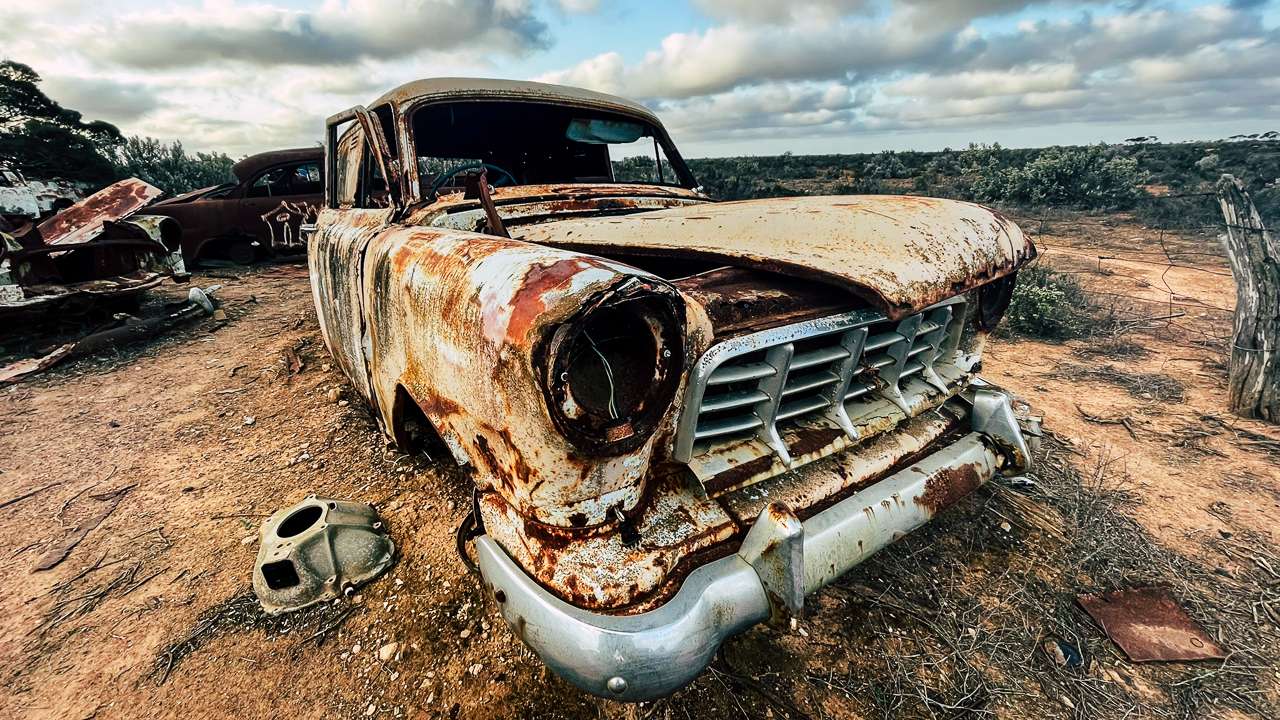
Long Abandoned Vehicle At Koonalda Roadhouse
Koonalda Cave: A Cultural and Geological Marvel
Day two took us to Koonalda Cave, a must-see for anyone visiting the area. This enormous sinkhole has deep cultural significance for the Mirning people and is one of the oldest archaeological sites in Australia. Artefacts found here date back tens of thousands of years, offering a glimpse into the lives of the Nullarbor’s earliest inhabitants.
The cave’s entrance is fenced off to protect it, but just standing near the edge and peering into the darkness is enough to give you chills. I asked Amanda if the fence hadn’t been there if she’d fancied climbing in for a closer look. Her response? Yeah I won’t repeat it but I will say it contained a few references to “idiot”.
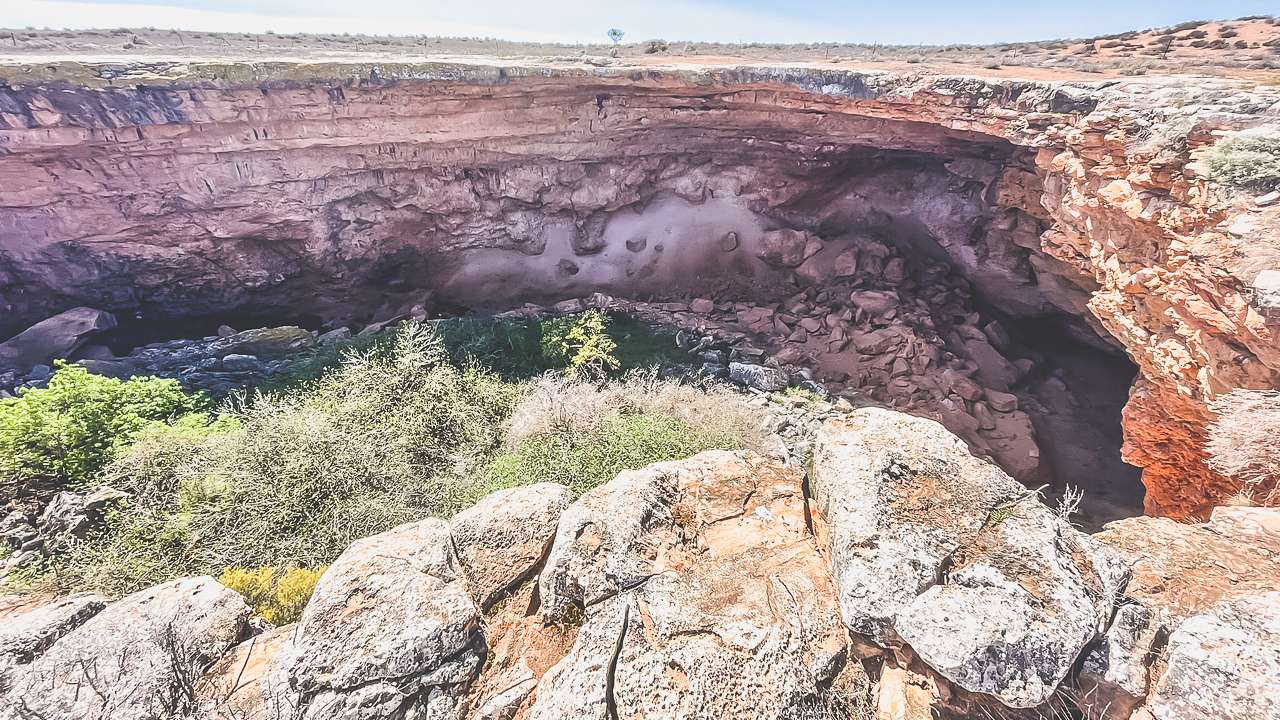
Koonalda Cave
The Hunt for the Koonalda Homestead Blowhole
Next on our list was the Koonalda Blowhole. Blowholes are natural vents in the limestone plains where air from underground caves escapes to the surface. Finding this one was a bit of an adventure in itself.
With little in the way of signage or directions we relied on a dodgy map and a lot of trial and error. After what felt like hours of walking around in circles searching we figured out we’d been standing next to it for an hour. It wasn’t what we were expecting!
While the Koonalda Blowhole wasn’t particularly active that day it was still a fascinating thing. Standing over a hidden cave system with air gushing up from below is pretty cool.
Driving the Old Eyre Highway
To round out our trip we decided to go for a drive along a section of the old Eyre Highway. This dirt track was once the main route across the Nullarbor and driving it is like stepping back in time.
The road was rough and rugged, but it had a charm all its own. We managed about 30 km before turning back. We’d have liked to go further however it was getting late in the day. There were a surprising number of relics to be found including the remains of a substantial set of tanks. There were also a couple more sinkholes / caves.
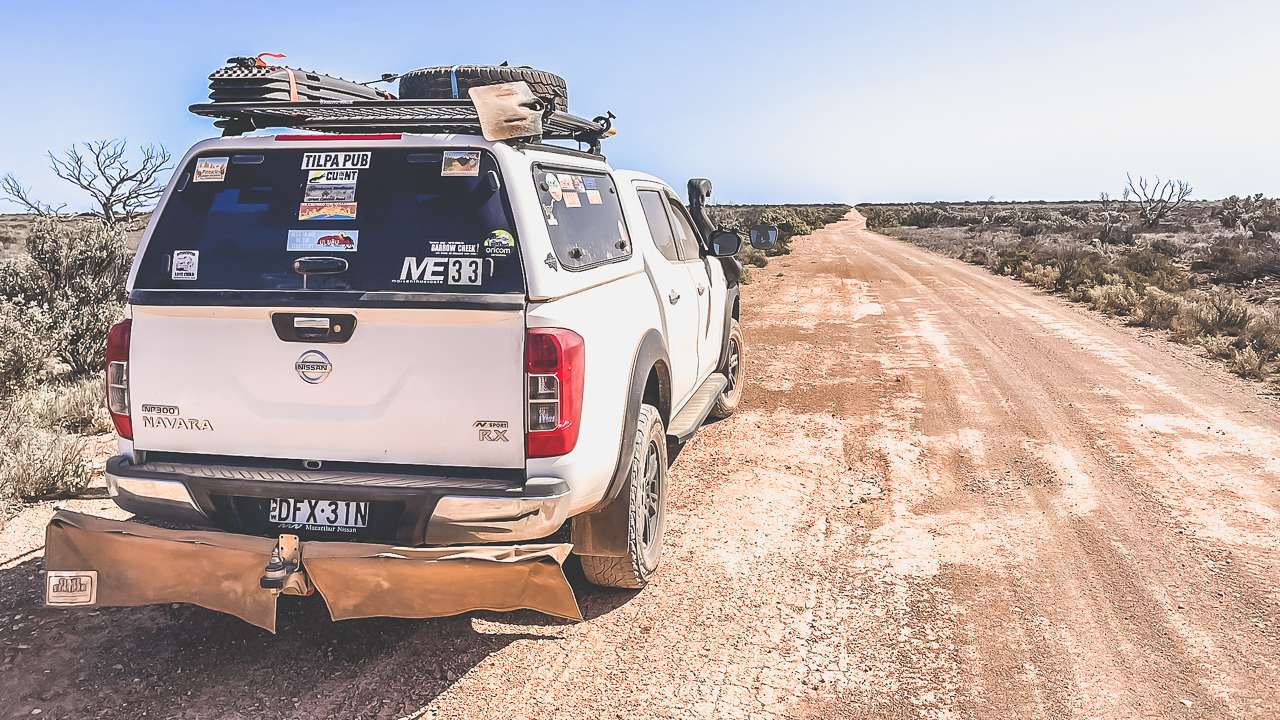
Driving The Old Eyre Highway Near Koonalda
The Koonalda Homestead Shearing Shed
The Koonalda Homestead shearing shed stands as a testament to the rugged ingenuity of early Australian pastoral life. Constructed with timber and corrugated iron, this weathered structure echoes the days when wool production sustained remote communities.
Once the lifeblood of the station, the shed housed shearers who laboured tirelessly in harsh conditions, helping to shape the economic heartbeat of the Nullarbor Plain. Today, the shearing shed offers visitors a glimpse into a bygone era, with its rustic charm and utilitarian design. Its proximity to the decaying Koonalda Homestead further enhances the site’s historical significance, capturing the resilience of outback life.
The Koonalda Homestead Sleeper Hut
The Koonalda Homestead sleeper hut is a stark reminder of the resourceful practices that defined life on the Nullarbor. Constructed from railway sleepers, the hut exhibits a pragmatic design tailored to the harsh, arid environment. These heavy wooden beams, once intended for rail infrastructure, were repurposed to create sturdy, insulated walls capable of withstanding extreme weather. The sleeper hut, located near the iconic Koonalda Homestead, offers a tangible link to the past, showcasing the ingenuity and adaptability of those who lived and worked in isolation. This modest structure embodies the resilience required to thrive in one of Australia’s most unforgiving landscapes.
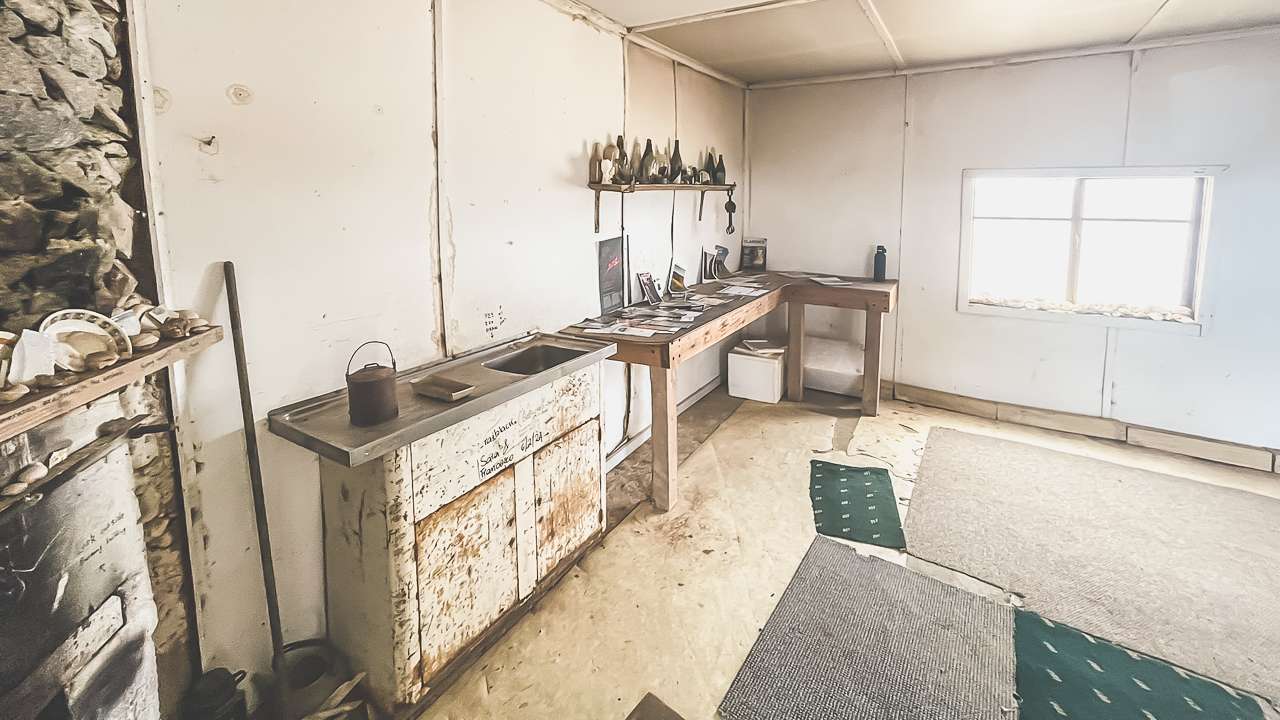
Inside The Sleeper Hut At Koonalda Homestead
Weather and Camping Tips
In September, the Nullarbor weather was just about perfect. Days were sunny and mild, sitting around 20°C, while nights were cool enough for a campfire without being too chilly. But the Nullarbor is a place of extremes, so if you’re planning a visit at another time of year, be prepared for scorching summers or biting winter winds.
If you’re thinking of camping at Koonalda Homestead, here are a few tips:
- Book Ahead: Reserve your spot online for per night.
- Take It Slow: The road in is rough, so drive carefully and avoid rushing.
- Bring Supplies: There are no facilities, so pack plenty of water, food and fuel.
- Respect the Site: The homestead is fragile – look, but don’t touch.
- Check the Weather: Plan for hot days, cold nights and potential storms.
Final Thoughts
Koonalda Homestead is more than just a camping spot – it’s a step back in time, a slice of Aussie history and a reminder of how resilient people can be. Amanda and I left feeling inspired, a little dusty and with plenty of stories to share. If you’re looking for an outback adventure with a healthy dose of Aussie history then Koonalda Station is a place to go.
Just remember: take it slow, book ahead and don’t be the bloke who loses a wheel on the track in. Safe travels and happy camping!
-David & Amanda
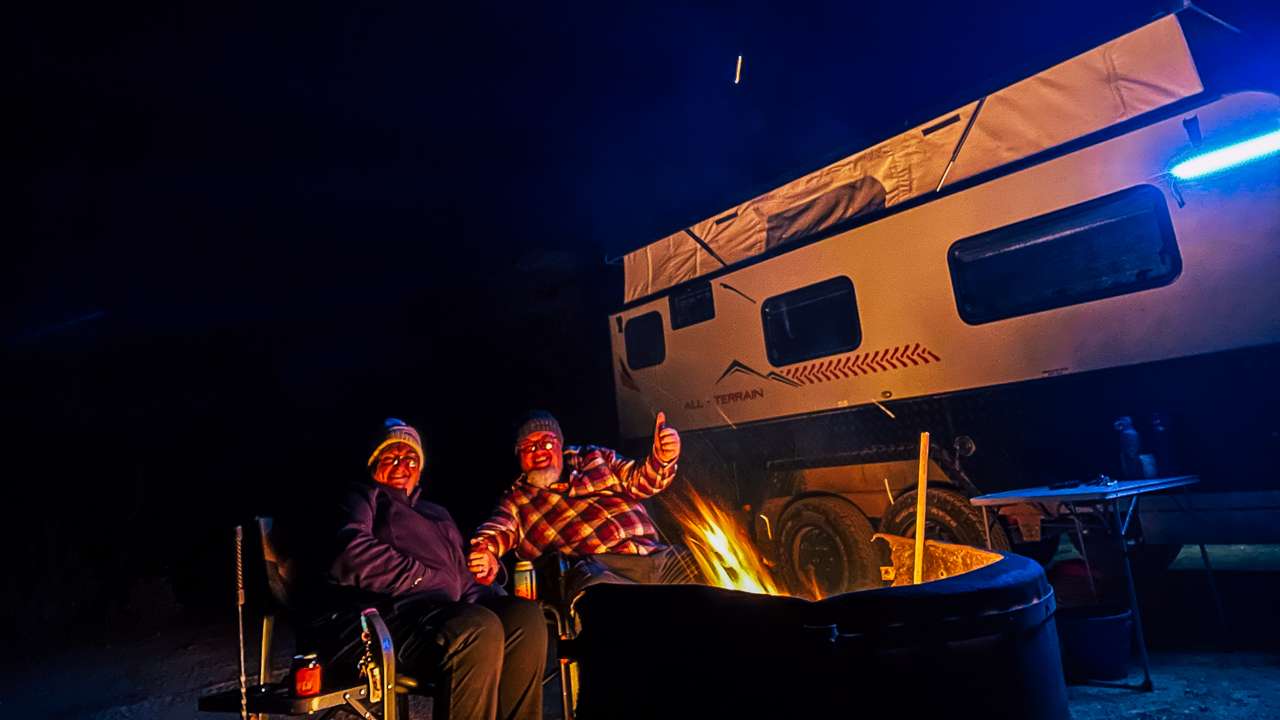
Camping With A Fire At Koonalda Homestead
Koonalda Homestead Photos
Old Overland Telegraph Pole Outside Koonalda Homestead
Old Overland Telegraph Pole Outside Koonalda Homestead
Inside The Abandoned Station Servo At Koonalda Homestead
Inside The Abandoned Station Servo At Koonalda Homestead
FAQs About Koonalda Homestead Camping And Exploring
What is Koonalda Homestead and why is it significant?
How can I get to Koonalda Homestead?
Can visitors camp at Koonalda Homestead?
What can I see and do at Koonalda Homestead?
What is the history behind the car graveyard near Koonalda Homestead?
Is Koonalda Homestead part of a national park?

